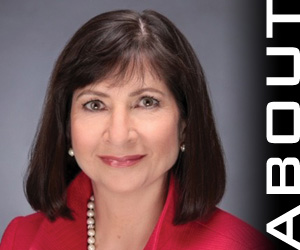Director's Cut | Fall 2020
Bias and the Board
When bias goes unnoticed and unchecked, it can deteriorate governance best practices, derail solid decision-making, and depreciate shareholder value.

Kristie P. Paskvan, CPA, MBA
Board Director and Leadership Fellow
Strategies for Today's Corporate Finance Leaders
Bias [ˈbīəs]
Prejudice in favor of or against one thing, person, or group compared with another,
usually in a way considered to be unfair.
"There was evidence of bias against foreign applicants."
Board Bias [bôrd bīəs]
Prejudice in favor of or against one thing, person, or group compared with another,
usually in a way considered to be unfair, which results in a deterioration of governance
best practices and is a detriment to shareholder value.
Yes, it’s true—I made up that second definition. But after reading the existing research on
the effects of various types of bias on decision-making, the threat to board governance is
clear. Bias can erode corporate governance standards and processes specifically put in
place to ensure independence and objectivity. Even when a board has separate committees
for nominating, governance, audit, risk, and compensation, keeping those committees
functioning properly requires taking bias concerns seriously. Since boards represent the
shareholders of the organization, their decisions cannot be made lightly. Important ideas
and initiatives are expected to be objectively assessed: information gathered, experts
consulted, data reviewed, and perspectives debated before recommendations are voted
on. If objective measures are not taken for decision-making, and sometimes even when they
are, bias comes into play. When bias enters the process, decisions can more easily be
influenced by conflicts of interest, peer pressure, deference to authority, reliance on
unconfirmed data, and personal unconscious bias. These various biases can impair even
the most well-intentioned and responsible board.
In the past, one root of implicit bias has been a lack of diversity in the makeup of the board.
In an earlier column, I noted that many countries and a few U.S. states passed quotas for
female corporate directors, greatly increasing gender diversity at the board level. But many
boards still suffer from a lack of diversity. In 2019,
Black Enterprise reported that 37 percent
of S&P 500 companies did not have a single Black board member, down from 39 percent
in 2018. Since the sum total of the board’s experience is a significant persuasive influence
on critical board conversations, having diversity of thought and experience when choosing
independent board members is one way to help mitigate some of the bias risk. While bias
may still exist, it is diluted, less of a laser with only one focus, and more of a kaleidoscope
of ideas and opinions. While it might seem counterintuitive that a wide array of different and sometimes dissenting opinions leads to better decision-making,
research shows that organizations with greater ethnic,
racial, and gender diversity saw higher financial returns. My guess
as to why is that diversity leads to more creative problem-solving,
fewer blind spots, and more innovation. Based on my conversations
with fellow board professionals, the use of recruiters to find a
broader pool of candidates is increasing, bringing more objectivity
and diversity to organizations that demand it. This is an excellent
example of how to overcome a bias, offering hope that with
thoughtful initiatives, we can build a stronger board.
Here are four of the most common types of biases that I have seen
affect decision-making in board settings over my career, and
actions I suggest to overcome them:
Attribution bias: You assume negative motivations for the actions
of others without any evidence, while assigning the most generous
motivations to your own actions.
ACTION: Work on your emotional intelligence and give others
the benefit of the doubt, acknowledging they are likely just
as generous and complex a person as you are. This can
prevent misunderstandings that are all too common when most
communication takes place through email and videoconferencing.
If someone is late to a meeting or forgets to share important data,
remind yourself that it was likely unintentional or unavoidable,
not intentional or disrespectful. Better understanding people’s
motivations allows you to create partnerships and trust, therefore
yielding better boardroom conversations.
Anchor bias: You rely too heavily on the first piece of information
gathered when making decisions, allowing it to influence how you
view following information.
ACTION: Understand when making decisions that you may be
basing too much of your thought process on an early data point
that you need to verify or rethink. For example, the first number
mentioned in negotiations often anchors the rest of the discussion.
Board members should frequently ask themselves: “Are we thinking
about all the relevant facts? Are we considering all the options?”
Confirmation bias: You search for and retain only information that
supports your beliefs rather than information that disproves them.
ACTION: The board should always seek out dissenting opinions
when making decisions. Bring in experts you avoided in the past
because you disagreed with them. Consider failed initiatives as well
as successful ones as examples.
Groupthink: You feel uncomfortable bringing up a contrary opinion
or disagreeing with the majority of your fellow board members, so
you say nothing or agree. When recruiting new board members,
you look for those that are a “good fit” or “non-disruptive.”
ACTION: Energetic debate should be a standard way of operating,
not something to be avoided. Make it a habit to challenge ideas
and question the status quo. Create a diverse board where quick,
uniform agreement is not the goal.
As many opportunities as there are to get decision-making right,
there are even more ways to derail it. The decision-making process
that is key to the board’s efficacy can break down entirely if bias
creeps in. Understanding and confronting bias allows boards to
identify where their decisions could go awry. While confronting bias
can be uncomfortable, just as self-awareness builds an individual’s
character, honesty about interactions at the board level can build a
stronger and more effective team, adding value to the organization
and its shareholders.